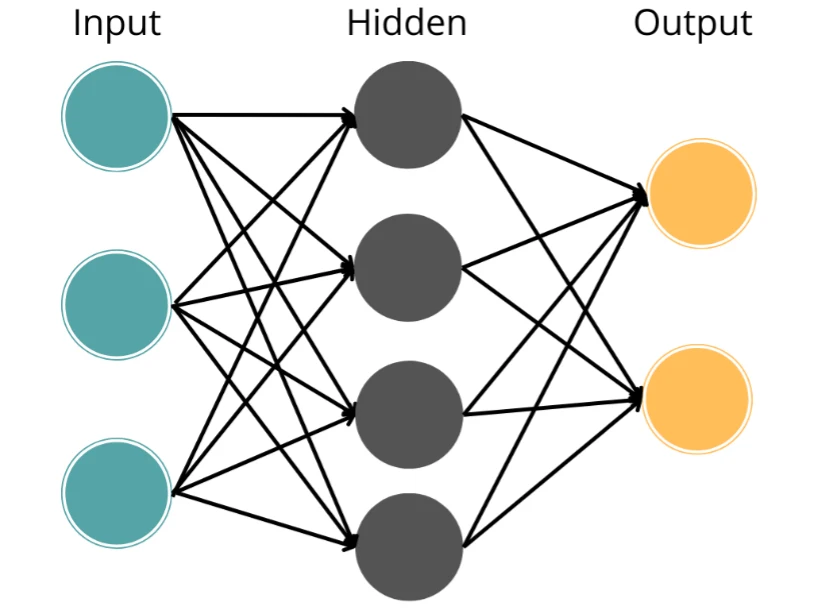Whenever presented with a complex computational problem, combining multiple models to create a robust learner that makes accurate predictions is called Ensemble Learning. There are various ensemble learning methods out there but if you have tabular data and are suffering from high bias, then boosting algorithms are your best bet.
Boosting gained its popularity over the recent years for its ability to improve the results of weak learners and providing tremendous accuracy scores. Interested in learning about the various types of this ensemble technique? Well, you’ve come to the right place as this article primarily focuses on some of the most popular boosting algorithms along with their applications.
What is Boosting and How Does it Work?
A boosting algorithm is a sequential approach to turning a weak learner into a strong learner. This is done by analyzing one algorithm at a time, avoiding the errors made in one algorithm in the next one, and eventually making a strong learner in an iterative manner. The reason for this algorithm’s popularity is that not only does it make the computation and interpretation of large datasets easier, but it also reduces the bias levels in your result.
The 5 Different Types of Boosting Algorithms
There might be countless implementations of different flavors of boosting algorithms and while all of them essentially follow the same idea, some end up performing better than the others due to minor tweaks in their implementation. Here, we’ll take a look at the five most widely used and essential boosting algorithms. Each algorithm has a mechanism and uses that differ from the other.
So, let’s start!
1. Gradient Boosting
Gradient boosting is an algorithm that helps improve the accuracy of machine learning models by using a loss function to measure the difference between expected and actual outputs. There are two types of gradient boosting: one for classification problems and another for continuous columns.
The algorithm uses the Gradient Descent Method to fine-tune the loss function, but it can still result in mean average error or log-likelihood errors. One potential downside to this approach is overfitting, which happens when the algorithm becomes too focused on the training data and fails to generalize well to new data.
Benefits: More exact predictions, good with larger datasets (not when they have a lot of noise in them)
When to use: Predict credit scores, classify images, natural language processing (NLP)
2. Ada (Adaptive) Boosting
Like the previous method, this can also be used for both classification and regression problems. It does this by prioritizing (assigning weight) the mistakes while examining which datapoints provided the most inaccurate predictions. Subsequent models use the mistakes made by previous algorithms to build on their predictions.
AdaBoost can be thought of as the main building block for most advanced algorithms and is not often used as a standalone algorithm now. When used, it is mainly combined with decision trees with single splits, and it is preferred to use a dataset with the minimum noise for this algorithm.
Benefits: Easy to use, increases the accuracy of weak learners, safe from overfitting.
When to use: Facial detection, filtering out spam, making financial analysis
3. XGBoost (Extreme Gradient)
XGBoost is a powerful variant of the Gradient boosting algorithm that provides better scalability, speed, and accuracy. Like Gradient boosting, XGBoost relies on a loss function to measure the difference between expected and actual outputs and adjusts the weights assigned to each dataset to develop the closest possible model to the user’s expectations.
XGBoost employs a technique called “gradient boosting with weighted quantile sketch,” which enables it to process large datasets faster. However, the results of this method may be complex to interpret, and the algorithm, like Gradient boosting, is sensitive to the noise present in the dataset and can be prone to overfitting.
Benefits: Enhance parallel run sorting, tackles overfitting better than Gradient boosting, faster, more accurate
When to use: Prediction of customer churn, fraud detection
4. Cat (Categorial) Boost
CatBoost is a Gradient boosting algorithm that is designed to handle categorical data without requiring the data to be converted into numerical values. It is based on the same principles as other Gradient boosting algorithms, but it has additional features that make it well-suited to handle categorical data.
When the data is fed into CatBoost, it automatically identifies and processes the categorical variables using a method called ordered boosting, which can also handle missing values. CatBoost then uses decision trees as the base learners, and it sequentially adds trees to the ensemble, with each tree correcting the errors made by the previous trees.
To prevent overfitting, CatBoost uses a technique called shrinkage, which reduces the impact of each new tree. Moreover, regularization is also used to make the model to be simple rather than complex.
One significant drawback of CatBoost is that it can be slow and computationally intensive, particularly during the training phase. However, it can produce highly accurate models, especially for datasets with many categorical variables.
Benefits: Immune to overfitting, good with high-dimensional data with many features.
Where to use: Customer segmentation, fraud detection, recommendation systems
5. LightGBM (Gradient Boosting Machine)
LightGBM is amongst the most in-trend boosting algorithms nowadays and a lot of kagglers also use it for training models using extremely large datasets, mainly because of its efficiency and scalability. It achieves this efficiency by using several innovative techniques, including GOSS, Leaf-wise Growth, and Histogram-based Gradient Boosting.
The GOSS technique enables LightGBM to focus on the most informative samples during the training process, by discarding those samples with a smaller gradient. This results in a more efficient and accurate model. The Leaf-wise Growth approach is another technique that speeds up the training process by growing the tree leaf-wise rather than level-wise, resulting in fewer splits.
While LightGBM uses regularization to prevent overfitting, it can still be prone to it if not handled with care given the humungous size of datasets its designed to handle.
One potential drawback of LightGBM is that it can be challenging to tune the hyperparameters to achieve optimal performance, and the resulting models can be difficult to interpret. However, with the right expertise and resources, LightGBM can produce highly accurate models on large datasets.
Benefits: More flexible than the other models, uses memory efficiently, is more accurate, available for everyone.
When to use: Parallel processing, time-sensitive applications, when dealing with large datasets
-

Bagging vs Boosting vs Stacking
-

What is Ensemble Learning? Advantages and Disadvantages of Different Ensemble Models
-

Top 12 Machine Learning Algorithms
Which Boosting Algorithm is Best for You?
There is no “best” boosting algorithm per se; rather, it depends more on what purpose you want to use the boosting algorithm for, and which method is the best fit for that particular purpose. Each algorithm has its strengths and weakness, yet all these are powerful. Out of these five types discussed above, the ones used most commonly by industries are Gradient Boosting, Ada Boosting, and XG Boost. Gradient and XG boost can be used for more complex problems, and Ada boosting for more straightforward issues.
Here’s a summary table for you to decide which one to use in your specific case:
| Algorithm | Strengths | Weaknesses |
| Gradient Boosting | 1. Can handle various types of data and classification/regression tasks. 2. Can produce highly accurate models. | 1. Prone to overfitting. 2. Can be computationally expensive. |
| AdaBoost | 1. Can handle both binary and multi-class classification tasks. 2. Less prone to overfitting compared to other boosting algorithms. | 1. Sensitive to noisy data. 2. Can be computationally expensive. |
| XGBoost | 1. Efficient and scalable for large datasets. 2. Can handle both regression and classification tasks. | 1. Can be difficult to interpret. 2. Sensitive to noisy data. |
| CatBoost | 1. Can handle categorical data without requiring feature engineering. 2. Resistant to overfitting due to regularization techniques. | 1. Training can be time-consuming. 2. Can be memory-intensive. |
| LightGBM | 1. Highly efficient and scalable for large datasets. 2. Can handle missing data and categorical features. | 1. Can be sensitive to noisy data. 2. Can be difficult to interpret. |

